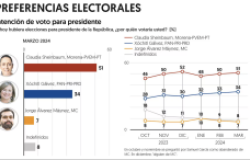Health Care: How France and the U.S. Compare
The World Health Organization ranked France's health care system highest and the United States came in at 37, behind most of Europe despite the fact that the United States outspends most nations per capita. Fellow Paul Dutton compares and contrasts these two systems.
Some 45 million Americans lack health insurance coverage and many more are underinsured, yet other countries spend far less on health care and have a better track record. France is among those countries.
In 2000, the World Health Organization released a report ranking the health care systems of 191 countries. France topped their list, while the United States came in at 37, behind most European countries. Interestingly, the United States invests the most in health care, nearly 14 percent of its Gross Domestic Product, while France ranks fourth in spending, with just under 10 percent of GDP. Per capita, the United States spends nearly double the amount France spends on health care.
This disparity among cost and performance intrigued Wilson Center Fellow Paul Dutton, who is working on a book that will compare the history and development of health care systems in the United States and France, from 1917 to present. "In virtually every industrialized country, the health care systems are in trouble," said Dutton, who teaches European history at Northern Arizona University and is an affiliated scholar at the Brookings Institution.
For all its success, France has its problems, most notably cost control, including difficulty affording new technology, expensive pharmaceuticals, and treatment of an aging population. But in France, everyone has coverage and all citizens still have direct access to specialists, said Dutton.
Ambulatory care in France operates much like medicine was practiced in the United States circa 1960 in that the French have no restrictions on choosing doctors.
"The idealized notion of a doctor-patient relationship is deeply ingrained in the United States and France," said Dutton. Americans and the French both want access to specialists and freedom of choice in treatment, therapy, and prescriptions, but America's transition to managed care brought limits to patient choice and physician freedoms.
Dutton's new book will explore why France pursued universal health care and why the two societies diverged. Back in 1917, the U.S. and French health care systems were similar. The attitudes and professional backgrounds of doctors were similar. Patients and physicians in both societies disliked government, or any outside, interference in health care. Both were attracted to the coveted doctor-patient relationship and patient choice.
In France in the 1930s, doctors agreed to sign onto a national health insurance plan as long as the law would protect private practice and freedom of prescription and therapy. During those interwar years, hundreds of French mutual societies served as insurance carriers.
By the mid-1930s, a quarter of the population had health coverage, compared to 6 percent in the United States. The French implemented the current system in the mid-1940s by creating a centralized system, featuring quasi-public insurance funds, which insure 80 percent of medical costs for the public. The mutual societies still exist today and 84 percent of French workers still use them as supplemental insurance coverage. By 2000, 100 percent of French citizens had health insurance.
Perhaps the program most similar to France's health care system is U.S. Medicare, in which ambulatory care and doctors are in private practice. Dutton said, "The French system demonstrates that a nation can have ambulatory doctors in private practice, maintain the traditional doctor-patient relationship, and cover everyone."










